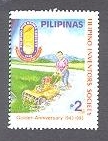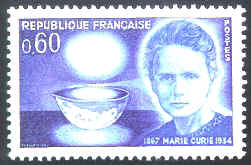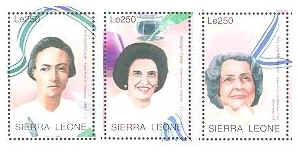 |
STAMPS
& |
Published by IFIA First
published August 23, 2002 |
© Farag Moussa: research and text. |
|
| Marie
Curie-Sklodowska was awarded two Nobel Prizes: the physics prize in 1903
and the chemistry prize in 1911. Is that why she is so often portrayed on stamps (in
France, of course, but even more so in Poland, her country of birth, and elsewhere too)?
Or does it reflect her unique status, a woman - an extraordinary woman - a female
phenomenon in the male-dominated world of inventors?
Sierra Leone
issued in 1995 a block of stamps
commemorating nine women Nobel laureates, among them three inventors, a Frenchwoman, an
American and Italian: |
|
| As for the Philippines, in 1993, it issued a pair of stamps for the fiftieth anniversary of the country's inventors' association. These stamps depict two inventions but do not mention the names of their inventors. As it so happens, I am personally acquainted with one of them and … she is a woman! To Magdalena Villaruz we owe the invention of a tool that might not automatically be associated with the fair sex: a motorized swampy field, rice paddies in particular. |
 |


